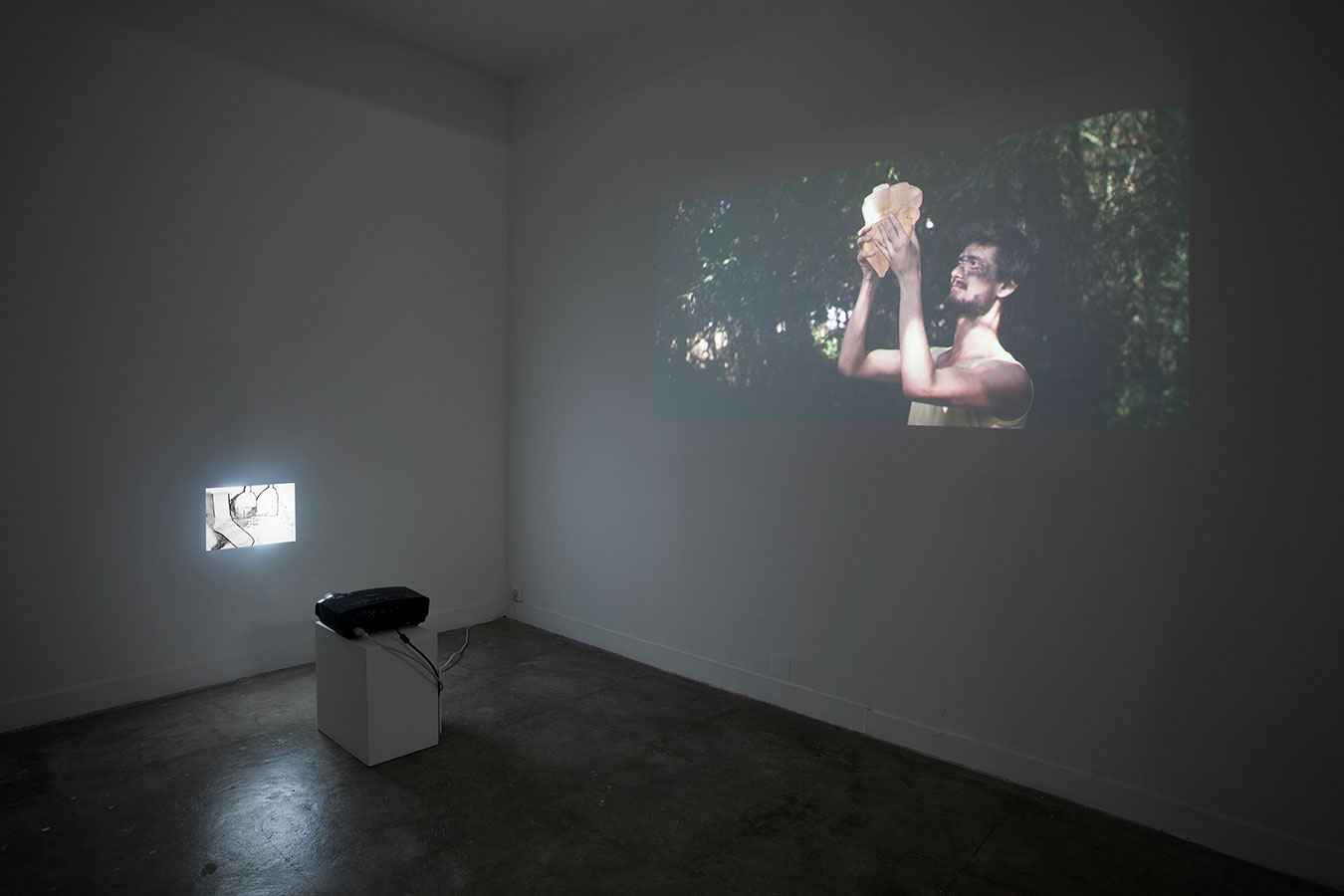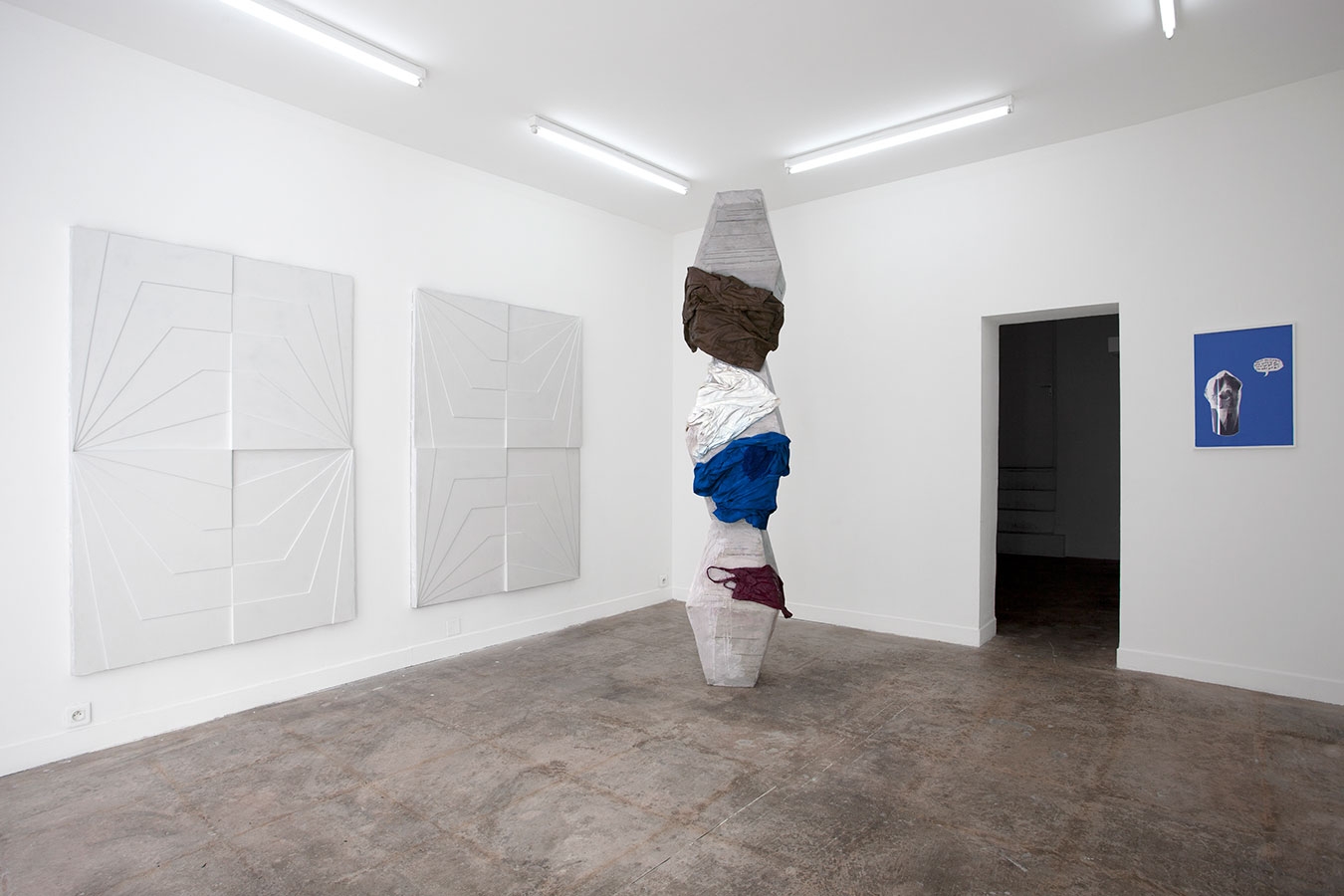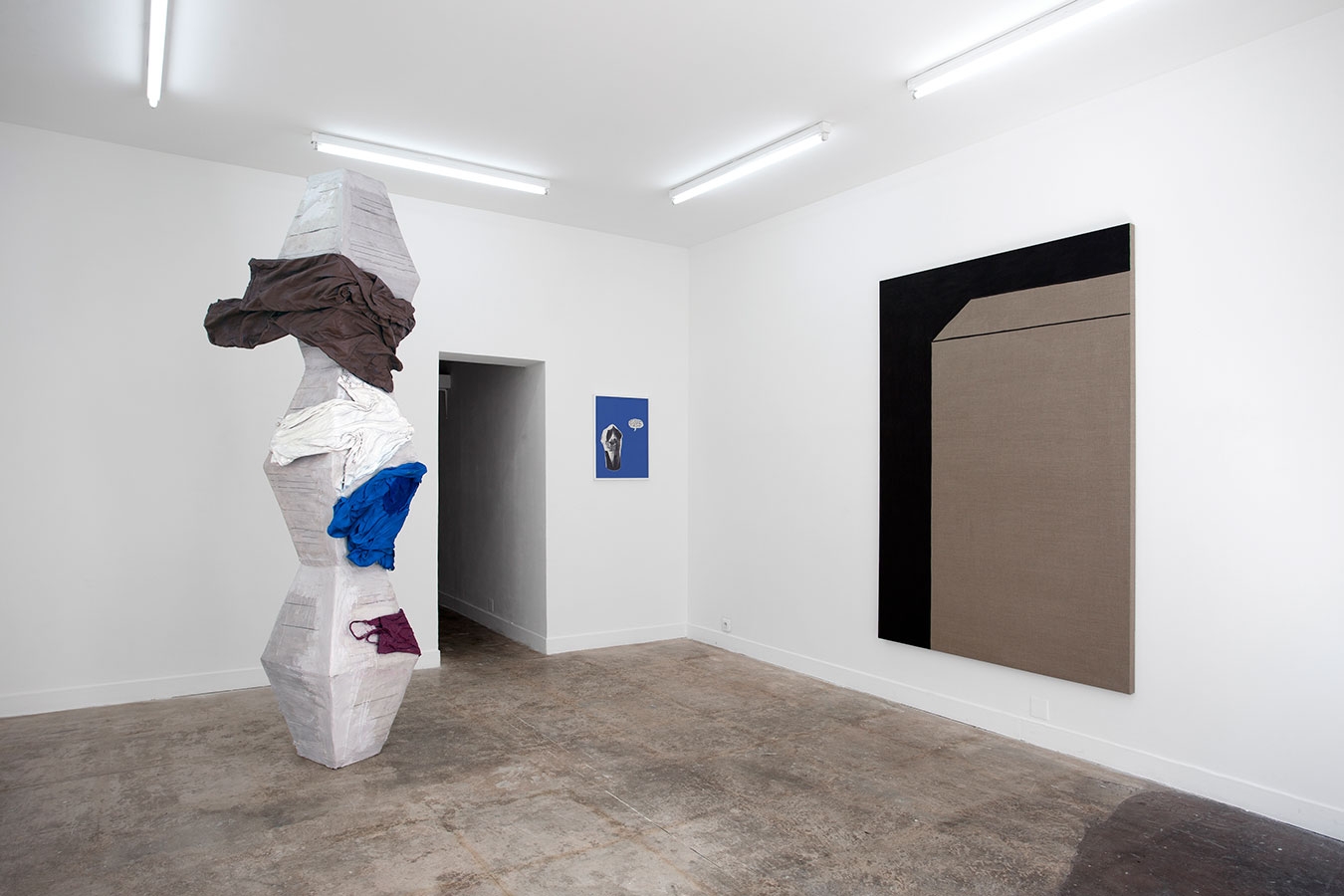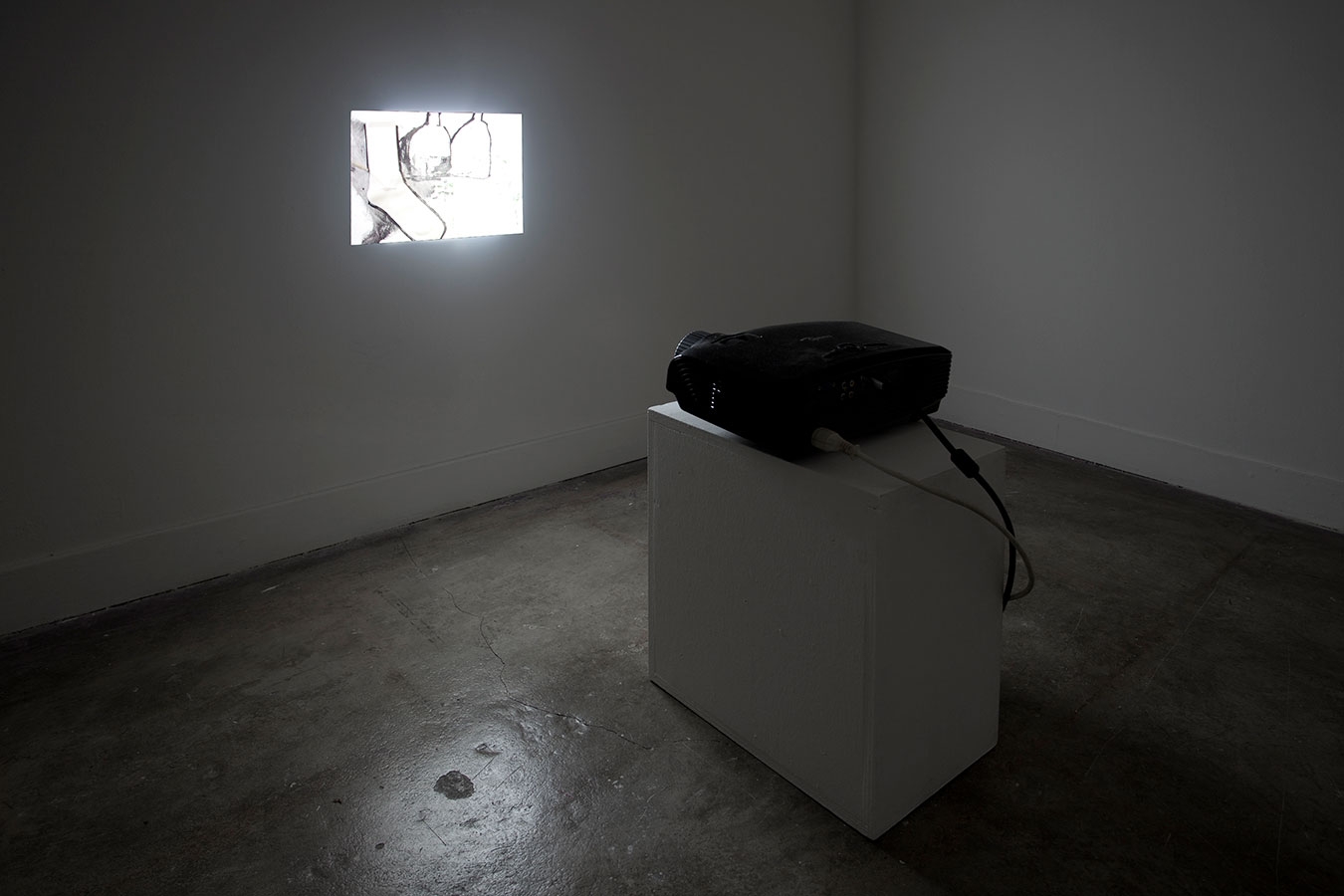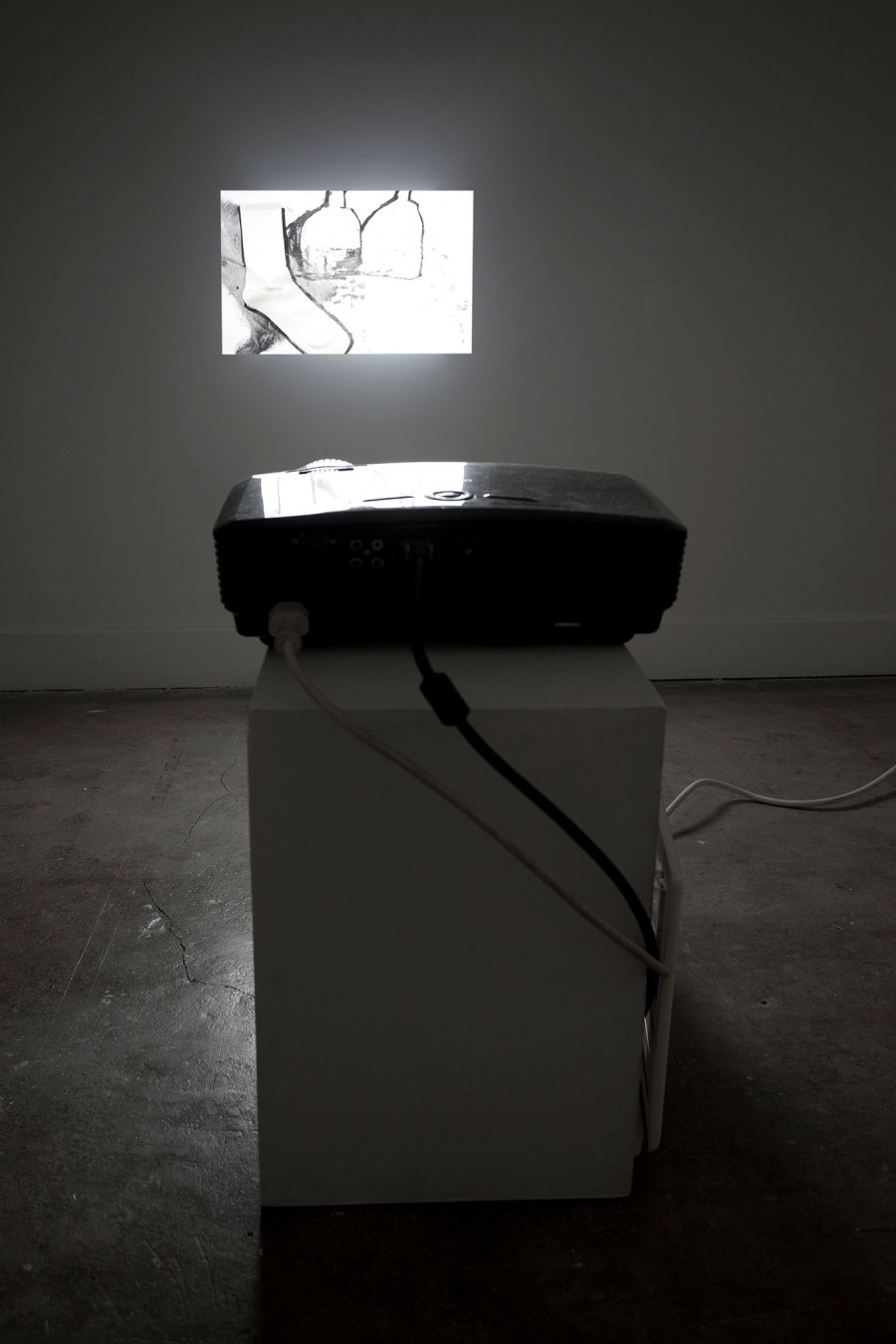Faisant suite à l’exposition A general history of labyrinths, qui, volontairement proposait un regard sur la peinture aujourd’hui, «What’s the first thing you’re going to do when you get new arms put on?» fige notre attention sur les données fondamentales de la sculpture, si elles existent, et ouvrent notre réflexion sur le rapport entre la sculpture et sa perception.
Longtemps, la peinture et la sculpture ont été associées, et au Moyen Âge, elles appartenaient à la même catégorie de peintres et tailleurs d’images. Avant l’invention des représentations perspectives modernes, le relief d’une image de grand format ne pouvait être donné autrement que par un traitement en bas-relief du plan du tableau. Aujourd’hui, les artistes ne réfléchissent plus en termes de distinction entre les médiums, mais mènent souvent une réflexion sur l’usage de l’art, sur sa réception, sur la question de la représentation de l’objet, sur la façon dont cette représentation se modifie selon la façon dont on le voit, dont on le regarde.
«What will you do when you get new arms put on?», le titre de l’exposition, fait référence à un dessin de Mick Peter, dans lequel cette injonction est adressée à un objet nous semblant d’abord indéterminé, peut-être une pierre, du moins un fragment minéral. Après avoir lu la phrase, on peut se douter que cet objet est en fait un tronc, à qui il «manque» des bras, et qui deviendra, par la magie de cet ajout, une représentation humaine. Cet ajout n’a d’existence possible que dans le champ du de la peinture, de la sculpture ou du cinéma. Mick Peter joue sur cette ambivalence dans l’ensemble de son travail qui investit la réception de la sculpture : un siècle pourtant après l’invention de l’abstraction, nous avons souvent, face à des oeuvres abstraites des réflexes à tendance «anthropomorphique», et nous les associons souvent à de possibles formes ou images humaines.
La question de l’image et de l’objet dans la sculpture, longtemps discutée, se teinte ici d’une énigme supplémentaire : et le corps, notre corps, seule référence matérielle stable face aux oeuvres, que subit-il ?
S’inscrivant dans une réflexion générale sur l’impact des représentations de la culture et des conduites culturelles, les peintures de Pedro Barateiro présentes dans l’exposition associent des éléments typiquement sculpturaux (comme un socle) à des éléments typiquement «humains» (comme un sourire). Dans sa vidéo intitulée XX, Leidy Churchman déploie un ensemble d’artefacts - tels qu’un pinceau ou des chaussettes - et les utilise pour composer une chorégraphie de surface qui trouble les limites entre genres artistiques (sculpture, peinture, performance) et questionne les relations entre le corps et la peinture. Comme Manuela Ammer l’écrit en 2011(1), la praxis de Churchman “place le corps au sein d’une large gamme de constellations sujet objet et l’implique tout autant dans le processus de recherche formelle que la peinture elle-même”. Le film de Nathaniel Mellors, Venus Projections, séquence de son oeuvre-saga Ourhouse, place précisément au coeur de son action burlesque et épique un fragment sculptural mystérieux, qui se dote, dans l’oeil du protagoniste principal d’une immense valeur capable de rivaliser avec des fragments corporels. Mick Peter poursuit sa réflexion sur l’usage et la réception de la sculpture par l’homme, et déconcerte notre rapport à ce medium. Florian et Michael Quistrebert développent leur recherche sur les possibilités formelles de la peinture abstraite aujourd’hui, à l’aide de matériaux bruts (comme le bois et le gesso) appliquée à la sculpture. Le jeu visuel créé par une savante composition géométrique perturbe la représentation que l’on peut avoir d’une surface ou d’un volume.
- Manuela Ammer, “Leidy Churchman, Ab-Ex clichés, living canvases and graveyards”, in Frieze D/E, 2011 ↑
